Windows Phone 7.5 "Mango" - Mobile IE 9 Browser Explored
by Brian Klug on May 26, 2011 5:06 AM EST- Posted in
- Smartphones
- Windows Phone 7
- Mobile
- WP7
- Mango
- NoDo
- IE9
Yesterday Microsoft announced a number of details and the first official look at the next release of Windows Phone 7, codename “mango.”
Back when we reviewed Windows Phone 7 (henceforth WP7), we were impressed by the platform’s overall smoothness, appearance, and unique mobile paradigm, but highlighted a number of chief areas that needed improvement for it to be competitive with much more mature smartphone rivals. Copy and paste support was the first thing that we (and many others) talked about, which was included in the NoDo update which just rolled out to all WP7 devices.
The next major areas were multitasking (and fast application switching), addition of more APIs for developers, and finally, additional improvements to the browser. Though we praised the initial WP7 browser for having an incredibly smooth UI, it ultimately lacked robust web standards compliance thanks to its use of the obsolete IE 7 trident 3.1 layout engine. Back when WP7 was announced, IE9 was little more than a technical preview - since then it’s seen desktop launch, and corresponding development efforts to port it to WP7. Today we were given our first glimpse of the new browser in Mango, based on on the trident 5.0 layout engine, same as shipped with IE 9.
There are a number of improvements in Windows Phone 7.5 “mango,” and before we dive into ones related to the browser it does bear going over all of them. First off, Microsoft has categorized improvements into three umbrellas that it considers areas of core functionality for the platform - communications, applications, and finally internet and our browser.
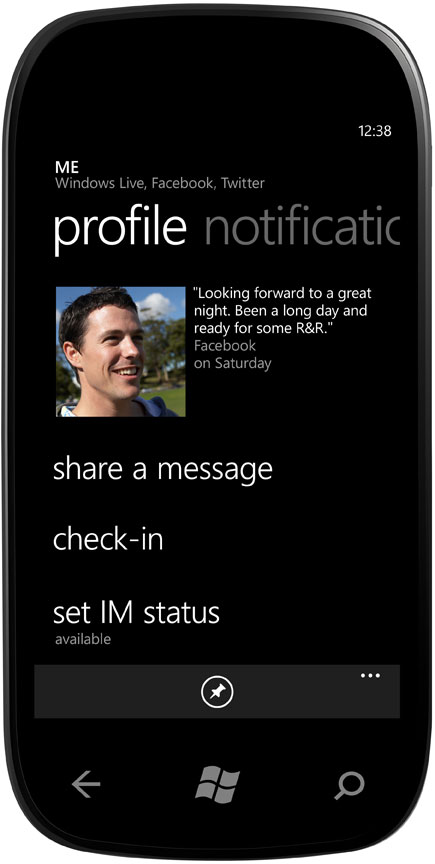
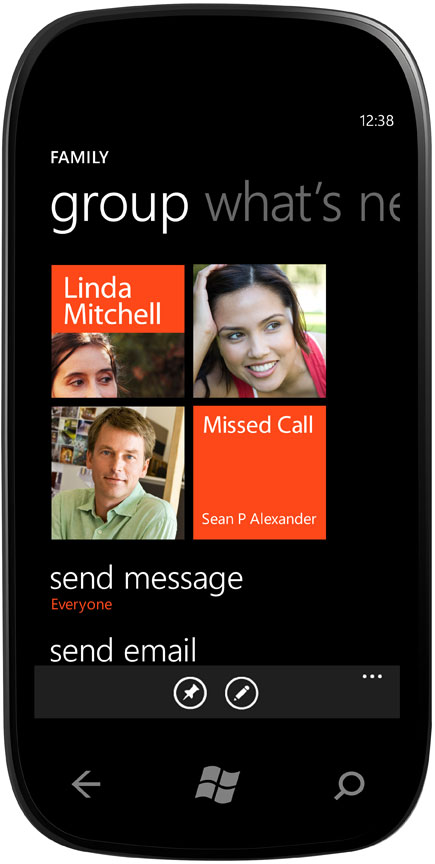
Left: The new people tab contact card showing Windows Live, Facebook, and Twitter integration. Right: New groups tab allowing quick inspection of any number of selected contacts
The first arm of improvements under communications is the new inclusion of Twitter, LinkedIn, and Windows Live Messenger data into each contact on the people hub. WP7 already included considerable amounts of Facebook data inclusion, now Facebook facial recognition, tags, and location check ins are supported as well. There’s a concept called groups that allows multiple contacts to be selected and placed in a live tile.
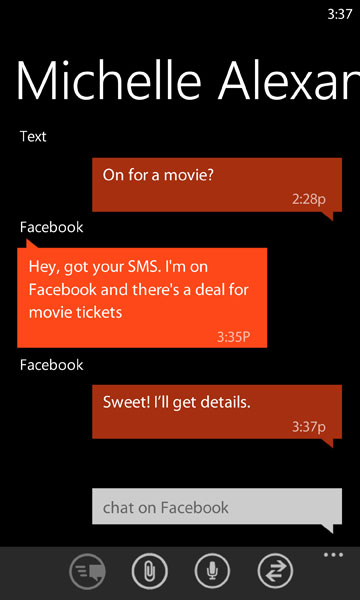
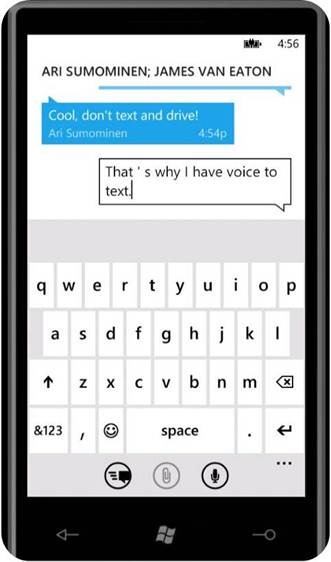
Left: Threaded messaging continuing from SMS to Facebook chat. Right: Voice to text recognition for messaging.
Along those lines, messaging in WP7 now includes a concept originally explored by WebOS. It’s called ‘threads,’ and it’s a mashup of IM and SMS for seamless conversation transition from mobile to the desktop. If a user is offline, SMS is default, if they’re on a supported IM service, the option to send an IM instead is selected. Windows Live messenger and Facebook chat are supported for IM, unfortunately there’s no mention of Google Talk or AIM being included. Right along those lines is inclusion of a text to speech engine for reading incoming messages out loud, and even more interesting is speech to text for composing and replying to messages. It’s clear that voice recognition tech is going to be a central feature for the next major version of each next smartphone OS.
One of the other things we wanted in WP7 and touched on in our review was that outlook on WP7 needed threaded email conversation support. This is included in the mango update as well, and threads can now be deleted, marked as read, and the like. Also included in outlook is multiple account linking and live tiles for individual inboxes.
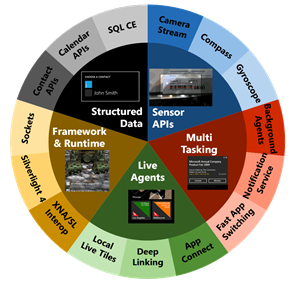
Under the category of applications are numerous new APIs, including support for a number of capabilities that developers requested going all the way back to MIX10. Back then I remember a number of sessions where developers were disappointed that WP7 wouldn’t initially have a number of things. Things like network socket creation - which is necessary for building applications like VoIP that require direct network access. Local SQL CE databases for storage and use in programs, and APIs for compass, gyro, and direct camera access, and APIs for contacts and calendars. Those are now very much a part of Mango, as discussed at MIX11. It’s clear that Microsoft was listening, even if it took just over a year for everything to come together.
Adding APIs isn’t something that results in immediately realizable features for end users, but enables developers to finally start porting applications on iOS and Android that leverage similar APIs. Skype and other VoIP applications for example would leverage socket support, as would streaming music protocols that can’t simply tunneled over HTTP, or video chat applications. Having a direct camera API enables augmented reality applications and third party camera apps as well - the end result is that with Mango WP7.5 is finally coming close to having the same level of API support as its more mature competitors.
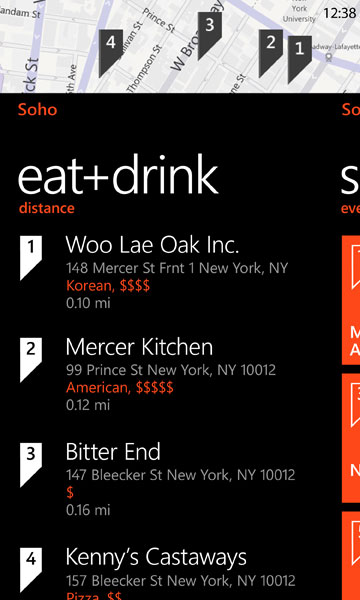
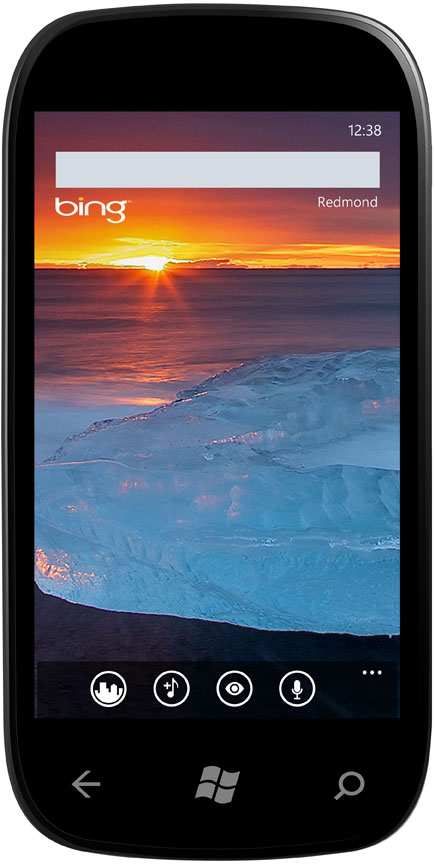
Microsoft showed off some demos of how Bing uses the camera API to search using live images of objects, in essence a Google Goggles for Bing - it calls this feature visual search. Likewise, music search is a clear nod to Shazam and enables music identification using a new sensor API for microphone access. In addition a number of improvements to Bing are coming in Mango, including improved local search.
The third and final tier of improvements in Mango is Internet. It shouldn’t come as any surprise that internet is such an important part of any smartphone platform that it earned its own category.










35 Comments
View All Comments
davepermen - Thursday, May 26, 2011 - link
as it's the only one that can take AGES to navigate on wp7.try to read an article till the bottom, then chose the link to the next page, and then read that to the bottom, and then next page etc.. it can take over a minute to load + make the link clickable (and has huge delay in doing so).
you're one of the few pages i read on a mobile that behaves that slow. hope mango fixes that finally.
in your load time, try it out with browsing more than one page (as noted above, try to read an article). it should be much slower then.
Shadowmaster625 - Thursday, May 26, 2011 - link
omg thats horrid. I knew these crapphones were bad but not that bad. I would like to see more side by side desktop browsing vs smartphone browsing comparisons.Griswold - Thursday, May 26, 2011 - link
Get shotdavepermen - Friday, May 27, 2011 - link
as i said, only on anandtech.com, other than that, the phone is very fast, perfectly smooth and a great experience.KTGiang - Thursday, May 26, 2011 - link
Anyway you can elaborate more? Such as your device/service etc? I am really confused as I am currently using the HTC Arrive on Sprint and I do not have any of the issues you mention. The load times are less than a minute and I have no issues with the links not loading quickly. The only issues I have that bothers me is when it starts to load a page with images, it sometimes blanks out the whole page for a fraction of a second and continues to load where it left off before that. It isn't even an issue.Are you using it with 6 tabs open? Clearly, when you're directing towards anandtech.com itself, it might be good to make sure your post is obvious about it. From the other reply you got, it seems like the user believes it is all websites and the phone's fault as a whole. Though, for whatever reason, they had a bad opinion of the Windows Phone in the first place. I personally would hardly call WP a "crapphone". I also believe that they don't know about how articles are handled because this is just a report of news anandtech gets and writes for us. They have no direct influence of what comparisons they can make until they actually have the device in hand.
davepermen - Friday, May 27, 2011 - link
samsung omnia 7. no tabs open.and no, it's just anandtech.com, and i thought i was quite clear about it.
i love my wp7 and it's fast for about everything else. it's just that page, reading articles on it is hell.
LaMpiR - Thursday, May 26, 2011 - link
Guys, it is 7.1, not 7.5?drothgery - Thursday, May 26, 2011 - link
No, it's 7.5. All the internal version number reporters are 7.5, and almost all of the marketing promos with a release number say 7.5. It's true the dev tools package is called 7.1, but it seems much more likely that 7.5 will be the final name.ts1279 - Thursday, May 26, 2011 - link
You state that separate tiles for each inbox is a new feature. Unfortunately, it isn't.Separate tiles for each email account is currently the only way that Windows Phone 7 can operate.
The good news (i guess) is that they have different, fancy icons for each service based on their logos.
Definately looking forward to just having a unified "mail" tile.
Operative Me - Thursday, May 26, 2011 - link
I believe the article is less clear than what was shown at the event.You can combine your mailboxes to get a unified inbox, but you can ALSO set up individual tiles for a different mail "group.
So let's say you have 2 home accounts, two work accounts and an old student account- right now, you'd have 5 different live tiles. With this, you could have 1,2,3,4, or 5, depending on how you wanted to group them.
Unified inbox is the default now.